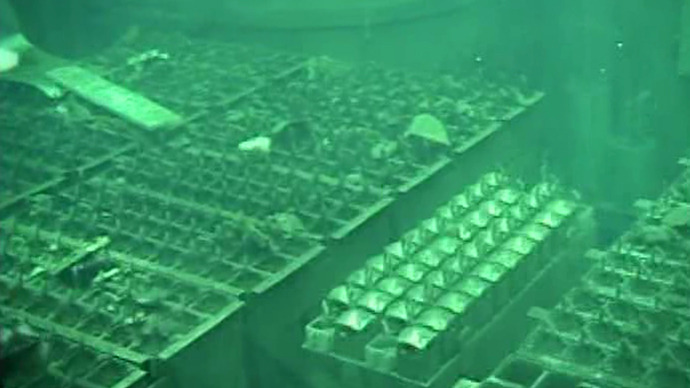One step from meltdown: Rat may have caused dangerous outage at Fukushima NPP

A rodent may have caused a power failure that put all Fukushima NPP cooling systems out of action. Power has now been restored at the plant as Japan returns to the use of nuclear power halted after the 2011 disaster.
The Fukushima Dai-Ichi nuclear power plant devastated by a tsunami two years ago continues to bring bad news to Tokyo Electric Power Co (TEPCO).
On Monday, March 18, at 6:57am local time, an electricity outage disabled nine facilities at the Fukushima plant, including cooling systems of the four storage pools for used fuel rods.
TEPCO dispatched 25 specialists to deal the problem, but it took all of 30 hours for technicians to repair the systems.
On Wednesday, just 12 minutes after midnight (15:12 GMT), power supply to the cooling systems was fully restored, reported TEPCO. However, certain questions remain.

Speaking at a briefing in Tokyo, TEPCO’s general manager Masayuki Ono was honest: “We haven’t found the cause,” he said.
Ono explained that due to cable repairs the cooling systems of the nuclear station have been without a back-up power supply since March 6, relying on a single source of electricity. That source failed.
The general manager did not specify whether the back-up electric supply of nuclear power plants is mandatory or whether any regulations have been violated this time.
Masayuki Ono made a supposition that the electricity outage could possibly be caused by failure of a distribution box affected by sand and wind.
Later TEPCO voiced another cause of the blackout: a dead rat.
The company reported that the rat’s corpse was found inside an
electrical distribution board of the power plant and it could not
be excluded that the animal caused the short circuit that cut
electricity supply to vital systems of the deactivated nuclear
station.
Another questionable moment of the emergency is exactly the same as during the initial disaster two years ago.
Back in 2011, TEPCO was well aware of the disastrous consequences of the earthquake and tsunami striking the Fukushima plant, but opted to play down the scale of the catastrophe for several months for fear of the reputational and financial costs.
This time, TEPCO informed the government's regulatory agency immediately about the blackout, but the company waited for three hours before issuing an official public press release.

Though no radiation spikes have been registered near Fukushima plant during the blackout, a real problem was imminent. If not cooled, even used uranium fuel tends to heat up because of the fission that continues within it. Uncontrolled heating leads to increasing fission and, as a result, a meltdown of the rods, exactly as it happened with the fuel from three of the four reactors at Fukushima Dai-Ichi after the March 2011 events put plant’s cooling systems out of order.
TEPCO has particularly stressed that the temperatures of all the fuel pools remained below the maximum safety limit of 65 degrees Celsius.
The latest incident at Fukushima Dai-Ichi comes as the newly–elected Japanese government is opting to revive the national nuclear power industry.
After winning national elections in December with a landslide victory, Japan’s Liberal Democratic Party and its leader, Prime Minister Shinzo Abe, promised to reconsider plans of the previous government to give up nuclear energy altogether by the end of the 2030s.
PM Shinzo Abe believes that nuclear energy and plans to revive the world’s third-biggest economy are inseparable.
The Fukushima catastrophe became the biggest nuclear incident after the Chernobyl tragedy in 1986. Japanese authorities had to evacuate 160,000 citizens living in the 20km no-go zone that became uninhabitable because of radiation fallout.














